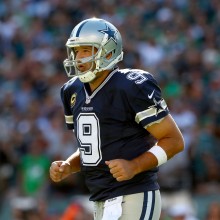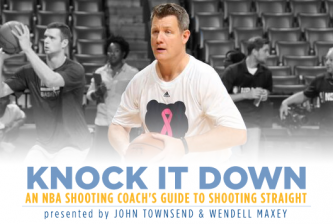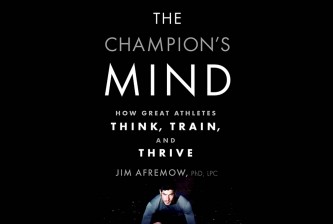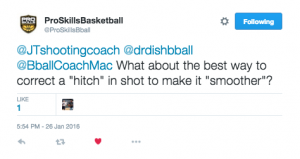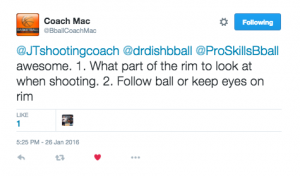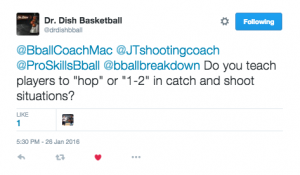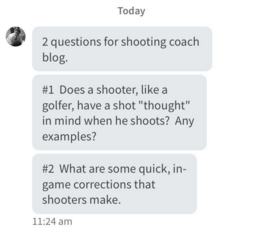Thank you very much to those who reached out with questions on shooting and player development since the last Knock It Down blog post. It’s always great to talk basketball and share what I’ve learned working as a shooting coach the last 26 years, with 8 of those years working in the NBA.
I look forward to holding more Q&A’s as we move forward with the blog…but for now, lets get into answering some shooting questions:
Like the old saying goes, “perception is reality”. So for a 19-year old player to do a complete overhaul of their shot, is something you can help them do. But that decision has to be made by the player. Some of the variables involved there are, is the player — he or she at 19-years old — going to attempt to play college basketball? How invested are they in the process of overhauling their shot? How much time and effort do they really want to spend on working on improving their shot?
For me, if you have a low lift like a Shawn Marion, then in the back of their mind the shooter may always feel that their shot is going to get blocked or will have the chance to get blocked, so there will be some hesitation there. Also the inability to create your own shot because of the low lift could create another issue. These are things to consider and investigate before moving into actually working on overhauling this particular shot.
If the player is onboard and invested and you’ve analyzed how to help them improve, then the next step is to lift the ball higher and not so low. Developing a higher lift on the ball is important, but also that they player has a “straight shooting arm” (which I explained in a recent Knock It Down blog post) and that their shot is aligned with the basket as opposed to aligned with their body.
You want to have a plan. Part of that plan is writing down everything that you do with your shot and form, makes, misses, placement on the court and time spent working on these areas. You also want to look at your shot — video analysis is great, especially with “Coach’s Eye”. Also, having access to someone who will rebound for you or investing in a “Dr. Dish” basketball shooting and rebounding machine would help speed up the process. But part of the plan too is, you have to be smart and be able to crawl before you can walk: stay close, stay accurate and make sure your shot and arm is straight and aligned with the basket. That’s where having video and a rebounder will help so you can then see if for yourself. Because then you can start to move back further and incorporate running, movement, coming off of screens, catch and shoot. But in the end, being patient with the process is part of that plan.
I think it really comes down to what kind of hitch it is, because there are a lot of different hitches you can see it shots. But to do a cover-all answer, you want to make sure that everything is lined up with the hoop.
A lot of times you have a hitch because you are lifting the ball to the middle of your face or the middle of your forehead, then your head goes back and shoulders go back. That’s what will cause a hitch. But to get rid of a hitch, you can use something like a “shooting tee” which I mentioned in the blog post, 3 Steps To A Straight Shooting Arm. You would want to stand to the left of the shooting tee if you are a right handed player. Make sure you have a straight shooting arm and then gradually work on lifting the ball to the strong side of your cheek or chin, forehead or head and focus on keeping everything smooth on the right side of your body.
I will answer the second part of the question first…keep your eyes on the rim. I don’t say look at the front of the rim or the back of the rim because if you are good at aiming and shooting, you’re going to hit that objects.
I think you look at the whole rim and focus on shooting the ball up and over the front of the rim. But you should look at the whole basket, because that’s what you are going to look at if you are in the right corner, the left corner, the wing or baseline of the floor. It’s easy when you are in the middle of the floor or shooting a free throw. So, I say look at the whole rim because that is your target. It is a very common question, but an important one.
Most players in games will do a 1-2 step, so that is what I teach. The one time a player might use a jump stop or a hop, is on a post move or something that is close to the basket.
But also apply my own coaching philosophy when I am working with a player. I usually try and do less is more. There might be times where I am working with a player and I don’t let them move their feet at all. I let them line up their feet according to where they are at on the court, or if they are lining up with the basket to make sure they are to the left of the basket so their shooting arm is in line. That’s when I focus on “no feet” as we discussed in the blog post, My Shooting Coach Vocabulary. Some of this may go against the grain, because it is a different approach and no one really teaches that. So I will say “no feet”, and the player just has to jump up and shoot it. A lot of times when you start shooting on the move, the footwork or the timing of the footwork can really screw you up. For example, if you have the ball in your hands before your feet have stopped moving. Or do you start to lift up the ball into your shot before your last foot hits the floor? Timing and rhythm can really mess up a shooter and mess up their feel even on a hop or a 1-2.
Absolutely. As a shooting coach you have to give the player their thought. It should be two things — preferably one thing – that I call a “Performance Cue”. That Performance Cue needs to be consistent, simple and something they can remember until they have mastered it and get the ball to go into the basket.
The Performance Cue can then be applied to the in-game corrections a shooter can make. As a coach, that is what you need to remind them of. And as a player, you need to be aware of what your Performance Cue is (or are). That’s why it’s best to keep it simple and limited in number. For example, if a certain player is not making shots I will not say anything to that player until they something to me first. Once they say something about their shot, then I have a list with Performance Cues associated with each player. I can then repeat the Performance Cue back to the player – lift to the top of your head….or, no feet….or, straight arm…or, start the ball outside of your body. That way players will start to come out of games and recite back their Performance Cues out loud or to me as both a reminder and as a way to recognize what they need to work on.
As a shooting coach you are also a teacher. You want to be able to teach them to coach themselves.
Read more from the Knock It Down archive
Follow John Townsend on Twitter
“Like” Knock It Down on Facebook

